About three quarters of the main parts floor in Spruce’s Corona, California warehouse is visible here. The wire cage in the foreground houses high-value avionics; the main conveyor line runs diagonally through the middle of this photo, hidden in an aisle between the shelving.
We’re not sure, but we wouldn’t be surprised if Orville and Wilbur had an Aircraft Spruce & Specialty catalog in their Dayton shop. This aircraft wish book is so ubiquitous it’s become a staple anywhere airplane is spoken, especially in homebuilders’ garages and hangars.
But did you ever stop to wonder how everything from rib stitch cord to EFIS panels somehow arrives at your doorstep via that brown truck after a call to Spruce? Well, us too. Several of us at KITPLANES® live within flying (or driving—if we must) distance from Aircraft Spruce’s headquarters in Corona, California and have wondered what went on beyond the will-call counter. No sooner had we asked, than we were there with a camera to give everyone the cook’s tour of where much of their homebuilt aircraft came from.
Starting with the Aircraft Spruce catalog, Tom Aberle at Aberle Custom Aircraft quickly checks descriptions and part numbers before going online to place an order. Most customers find the printed catalog the fastest, most convenient way to research and compare offerings.
Order Chasing
Figuring it would be proper to follow an actual order through the Aircraft Spruce warehouse, we started this journey by beetling five hangars down to Aberle Custom Aircraft, where biplane champion racer and aircraft builder Tom Aberle was, not surprisingly, ready to place an order with Spruce. Like approximately half of Spruce’s orders, Tom placed his online; the other half come from telephone calls.
Tom’s order was a simple bit of supplies for the shop—some cotter keys, a pair of oil filters, a vacuum system air filter—and like 98% of Spruce’s orders, would be filled and shipped the day it was received.
At Spruce, Tom’s order was initially handled automatically, their computerized inventory and ordering system generating a printed parts list that starts the actual pulling of parts off the shelves. Phone orders are, of course, entered manually by sales agents, but once in the system, the orders are otherwise identical.
Interestingly, phone orders are handled by the next available salesperson, and no matter where in the world the call is coming from—about 20% of Spruce’s business is international—the next available agent could be in any of Spruce’s three major North American warehouse centers: Corona, California; Peachtree, Georgia or Brantford, Ontario, Canada. There are many other Spruce outposts around the world—including several warehouses in regions such as Europe, Japan and Australia—along with literally thousands of dealers (such as Aberle Custom Aircraft) around the globe, but the three call centers handle all the phone-in trade.
James Mason mans his phone in the Aircraft Spruce Corona call center. While orders can be taken via fax, email or online, telephoning remains the preferred method for about half of Aircraft Spruce’s customers and is still the best way of getting the latest pricing, availability and shipping information.
So, when a call comes in on 1-877-4-SPRUCE, it automatically rings the next available agent’s phone. As that agent enters the order into the computer system, it simply queues up with the Internet orders. Obviously the system is smart enough to use the customer’s location and Spruce’s inventory to automatically decide which of Spruce’s warehouses makes the most sense to fulfill the customer’s order. For U.S.-based customers, this means the parts are coming from either Corona or Peachtree.
Naturally, when the order involves something that isn’t an off-the-shelf item, things can get more complex. This is typical of larger avionics orders—an EFIS system perhaps. According to Avionics Sales Manager Ryan Deck, four phone calls between the customer and Spruce are typically needed to sort the shopping details. Combine a complex avionics order with a sophisticated airplane and a discerning owner, and the smoke signals really fly. Deck noted he had 70 emails with one customer regarding one order. There wasn’t a problem; it was just a big job that had to be done correctly, like all the rest.
Once an order is in the system, the computer prints a parts list, which gets placed in a bucket on the conveyor. “Pullers” then use the order sheets to travel through the parts shelving to retrieve the parts and take them back to the buckets. And yes, you’d be impressed by Rosa Oropeza and her fellow pullers’ ability to quickly locate specific items from the staggering number of parts in the warehouse.
Once an order is in the system, the computer prints a parts list, which gets placed in a bucket on the conveyor. “Pullers” then use the order sheets to travel through the parts shelving to retrieve the parts and take them back to the buckets. And yes, you’d be impressed by Rosa Oropeza and her fellow pullers’ ability to quickly locate specific items from the staggering number of parts in the warehouse.
Parts pulled from the shelves—such as the oil filters in Aberle Custom Aircraft’s order—are set in the buckets along the conveyor. Everything possible goes into these buckets, including many items from the wood, metal and avionics shops, so it’s not unusual to see tires, cases of oil and other bulky items pile up in multiple buckets.
Other non-overnight efforts are custom-fit jobs, such as cutting cap strips and spars in the wood shop.
Inside the warehouse a squad of “pullers” use the auto-generated printouts from the ordering system to do the manual job of walking up and down the warehouse aisles to hand-select the parts. Spruce offers approximately 80,000 part numbers, and they keep about a two-month’s supply of those parts on the shelves in their three warehouses in Corona, Peachtree and Brantford.
Traffic on the conveyor moves in slugs, depending on if the scanning station at the end is operating at that moment. Sometimes the buckets are empty, save for their parts list as seen here, while other times the row of buckets looks like a Santa’s village of airplane goodies waiting to get checked out.
The realities of all this vary, of course, as some parts move much faster than others, and some parts, like avionics, are expensive to keep on a shelf. Also, a few part numbers have limited lives, such as rations in emergency kits, batteries and tires, so inventory control is more important with them, compared to durables such as hardware and tools.
After scanning, orders are packed for shipment at one of three shipping stations. Aircraft Spruce knows no one is in love with packing peanuts, so they use them only when necessary. Even better, they note their packing peanuts are water soluble for easy cleanup by the end user or Mother Nature, should they blow free.
Many part numbers are made or assembled on the spot from raw materials. Spruce’s wood shop, where the whole thing started, cuts and planes larger pieces of lumber into specific part numbers. The same thing takes place in the metal shop. A few smaller cable assemblies are swaged together on site, bulk electric wire is measured and cut, along with other bulk items such as SCAT ducting.
Bulky items are custom packaged at Spruce for motor-freight delivery. As luck would have it, it seemed someone was building a set of Pitts wings or something similar, as a long load of spruce was getting wrapped by Leobardo Sanchez during our visit.
Each part is given a bar code, which we’ve all seen on the description labels applied to the parts we buy. The written description obviously helps the pullers identify their quarry in the warehouse, but watching these folks at work made us think they’ve got 90 percent of the items memorized anyway. Yes, the Aircraft Spruce Corona warehouse is a 62,000-ft building, but considering there is a dedicated avionics cage (higher security), a wood shop, metal shop, corporate offices, shipping and receiving, the central stack of shelved items is more like the size of a supermarket—although the shelves are stacked notably higher and closer than in Publix. There are a staggering number of items on the shelves, but the pullers clearly have an idea of where they’re headed next with a quick look at the order.
Only after confirming the parts, billing and shipping information was correct did Armando Gutierrez adhere the shipping label to the box. The only thing left is to close the box and hand it over to UPS or possibly the US Postal Service, DHL, FedEx or various motor freight operations. Bulky, heavy, hazardous material, distance and international considerations complicate shipping— all good reasons why Spruce has multiple warehouses worldwide.
As the parts pullers gather the ordered items, they are placed in a plastic bin (“bucket” in Aircraft Spruce parlance), riding along a conveyor running down the middle of the stacks. At the end of the parts shelving, an employee uses a laser scanner to read the bar codes of everything in the bucket, checking it against the record in the order/inventory computer. This check ensures that everything in the bucket is on the order and everything on the order is in the bucket.
A homebuilder’s first impression of the Aircraft Spruce metal shop is it’s large, very open with some shelving and what seems a minimal number of tools. But only a few cutting tools and brakes are needed to fulfill the raw material supply mission; it’s up to builders to bend, drill, weld and trim the metal into finished goods. Here Omar Mena chop saws rod to the desired length.
From there, it’s the relatively routine matter of packaging and shipping the items to the customer. Spruce ships via UPS parcel or motor freight, depending on the size and weight of the order, and uses a variety of containers, from padded envelopes to custom-made enclosures for things such as, well, spruce spar lumber or metal longeron tubing.
It’s curiously reassuring to walk among the plenty in Spruce’s warehouse. Somehow, the volume of aircraft hardware visible in all directions reinforces optimism in aviation and sets the mind to what exciting machines could be built from it. And there is plenty to dream about; this stash of SCAT and CAT ducting is 10 feet tall and 30 feet long.
Optimistic and Growing
Our takeaway from watching how Spruce gets 2,000 orders out the door every day is, there is no magic, just 175 hard-working folks in a relentless push to make the customer happy by getting them their orders as quickly as possible. A successful family business devoid of corporate waste, there’s absolutely no slacking off at Spruce, yet moral is excellent and efficiency high. Customer service is king, and in the end, that’s the biggest reason you’ll find a Spruce catalog anywhere airplanes are built or maintained.


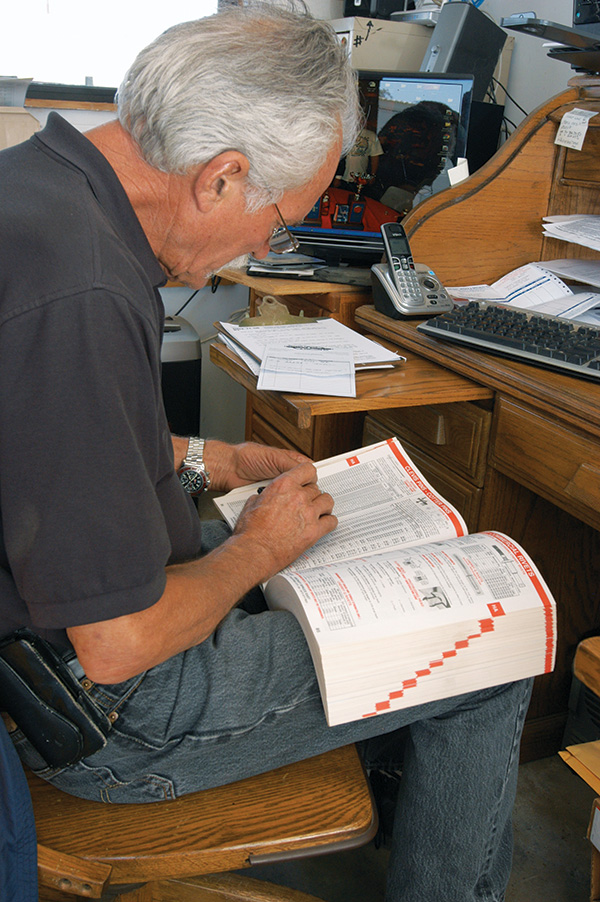

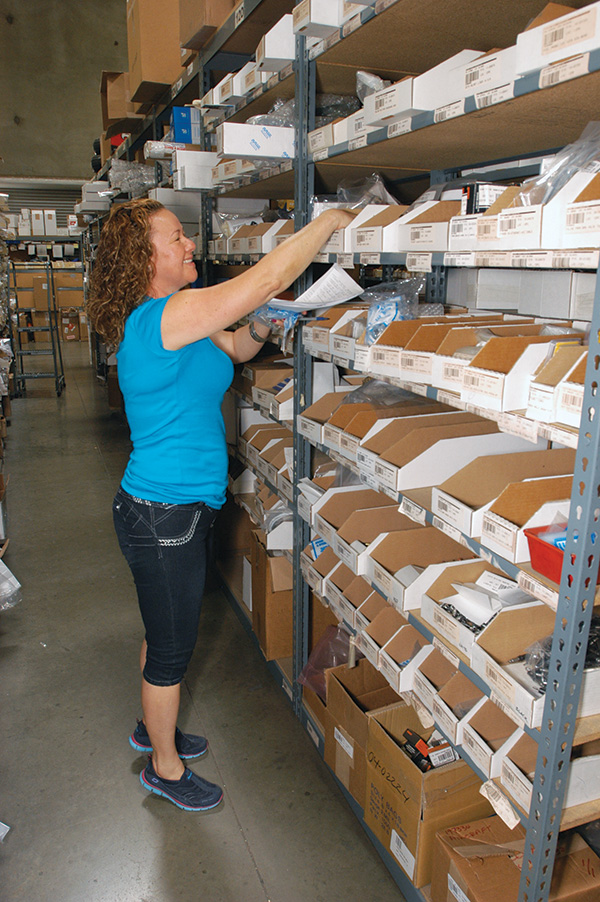
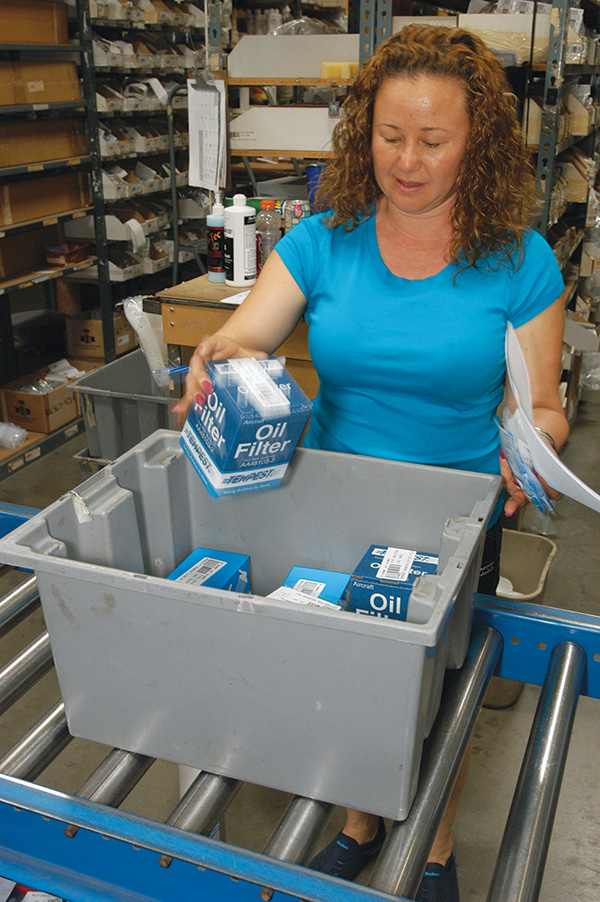
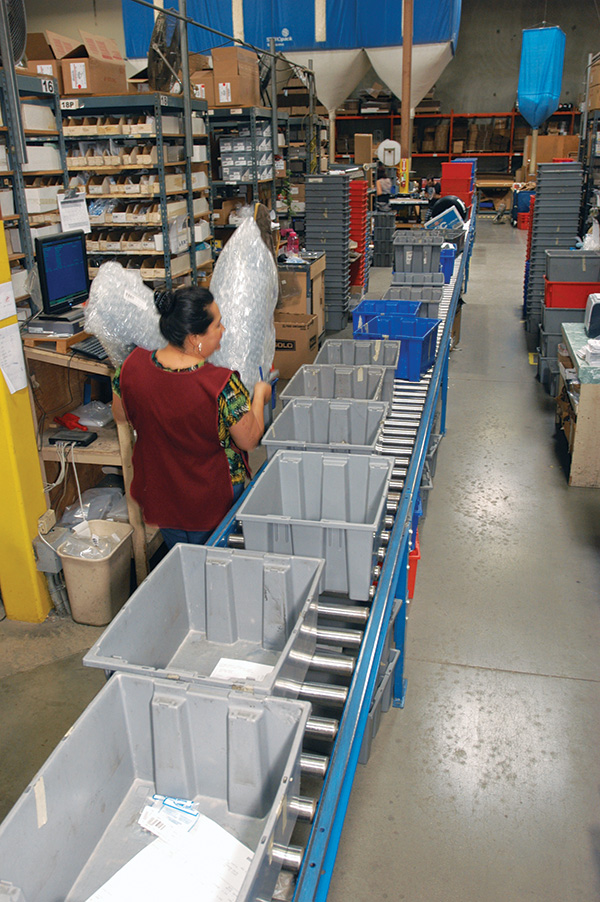
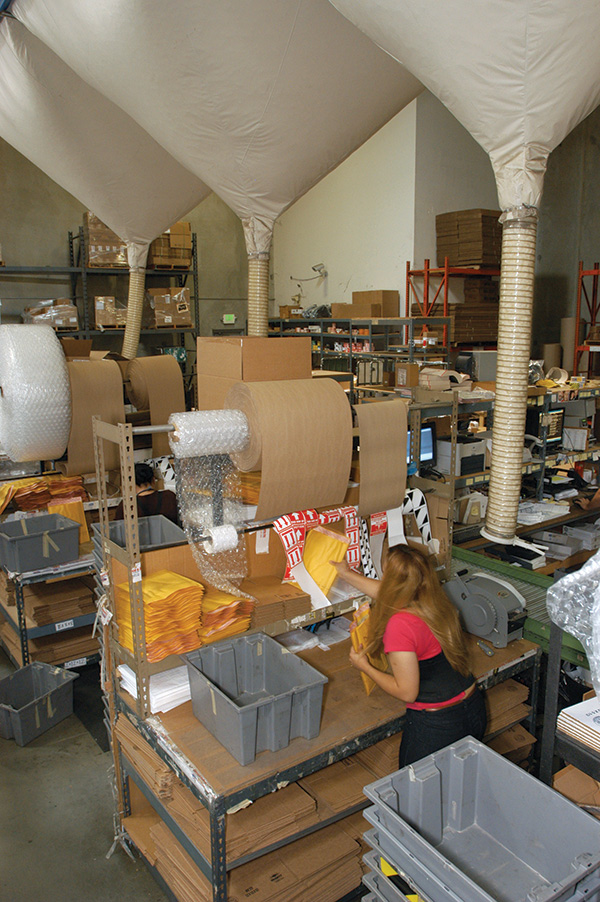
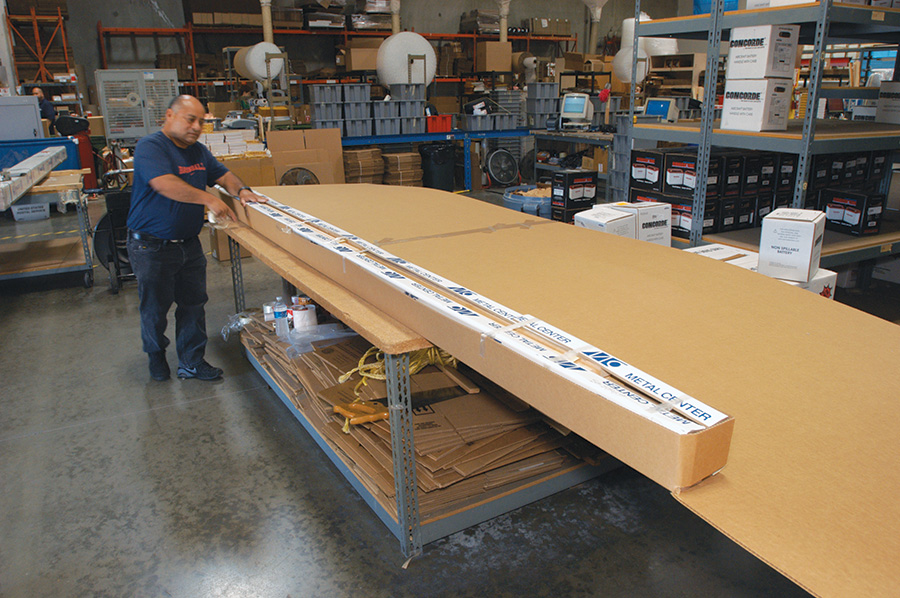
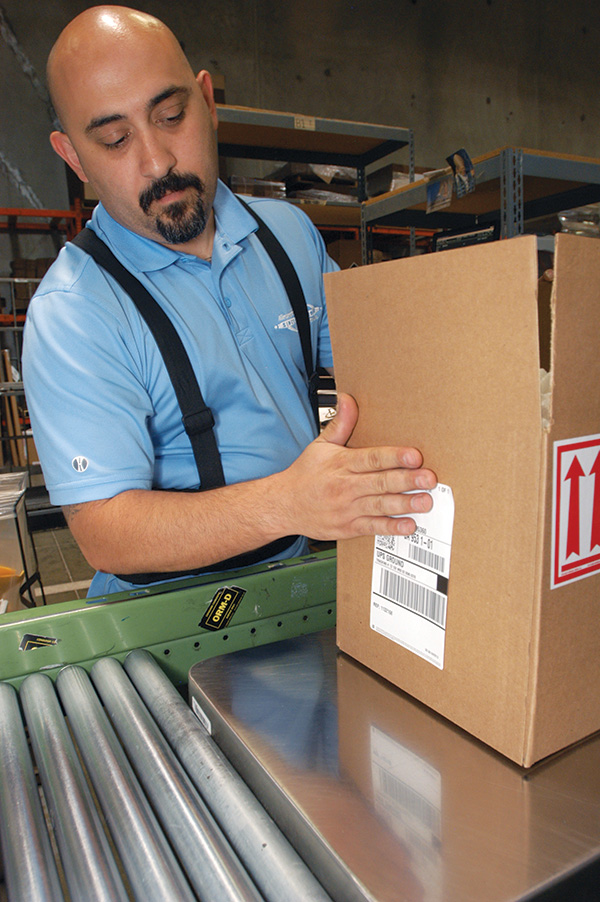
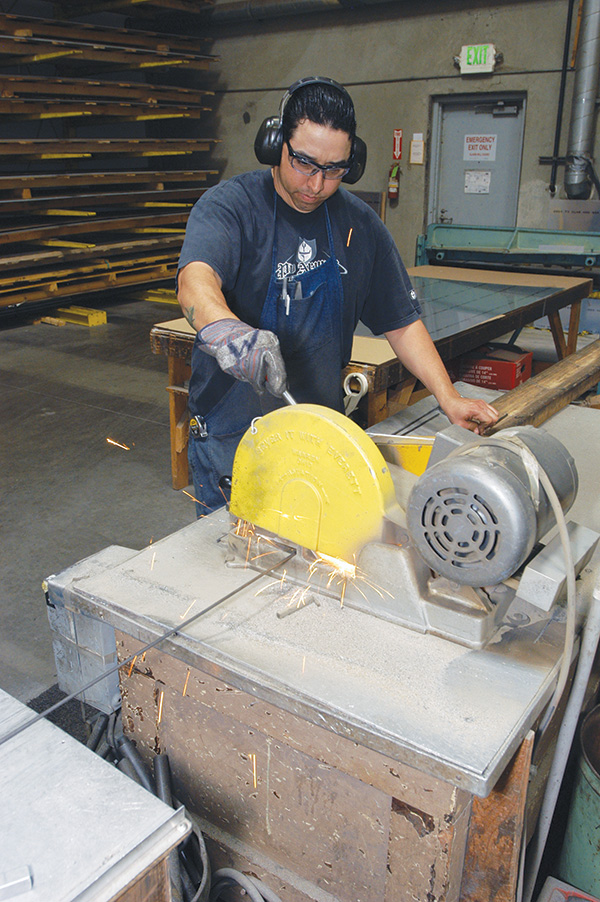
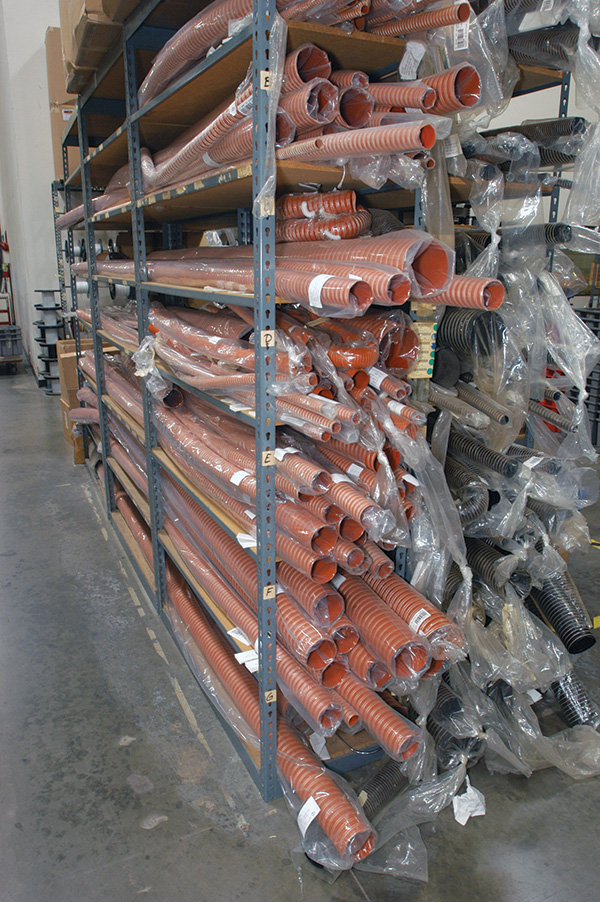
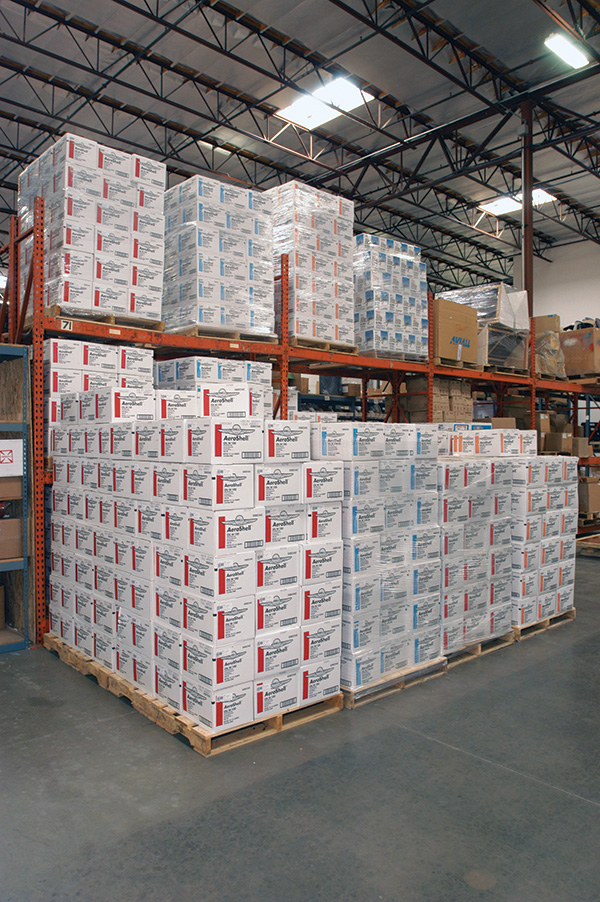

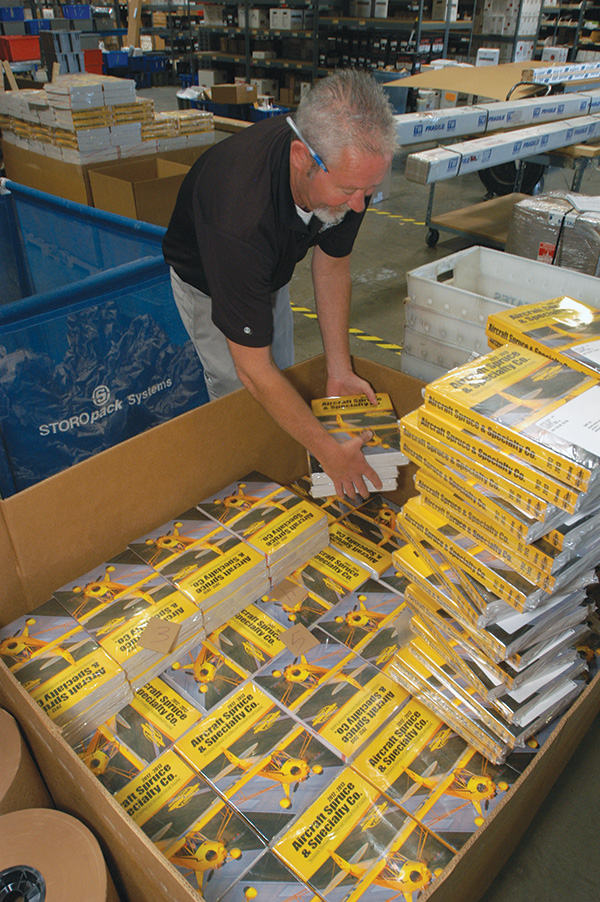
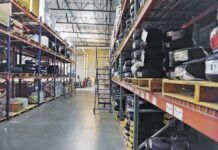

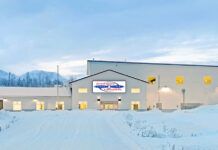


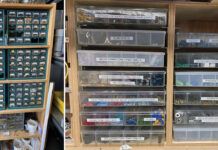
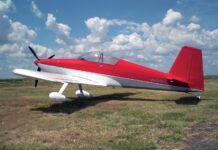
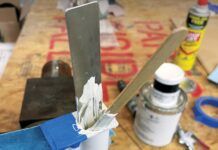
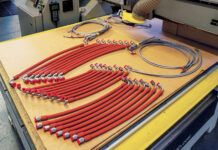
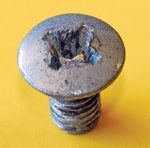
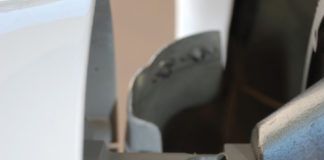

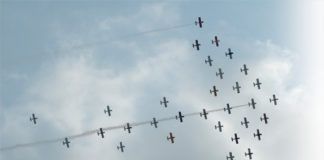
EIN TRAUM WIRD VAHR… A DREAM WHICH COMES TRUE… A CHILD DREAM COMES TRUE AFTER 50 YEARS.. NOW I SHALL BUILD MY AIRPLANE… BECAUSE ALL THE PARTS ARE WITHIN REACH At AIRCRAFT SPRUCE.